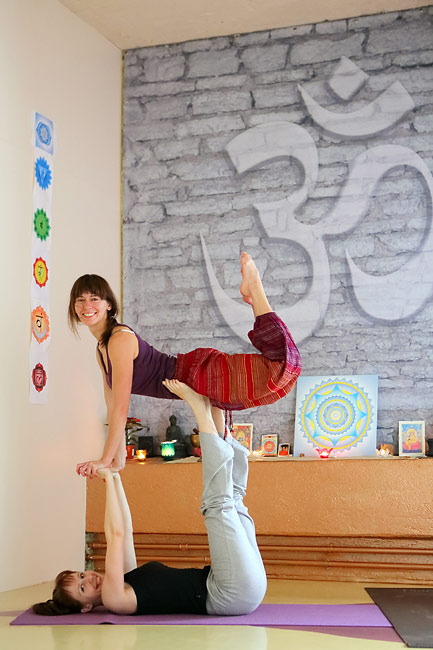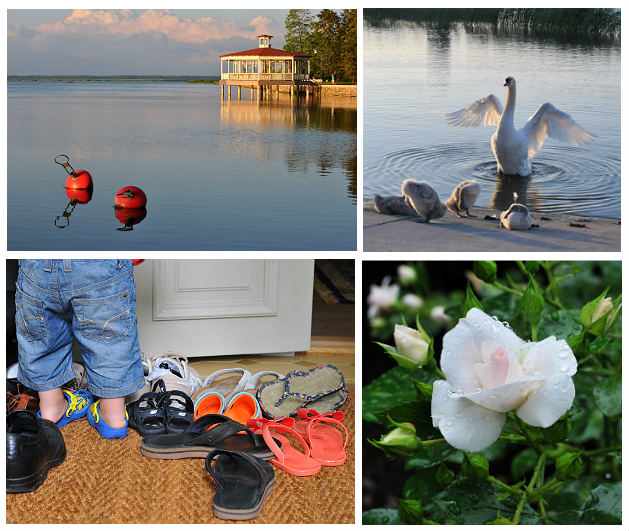Yoga practice in varicose veins
 What is varicose veins
What is varicose veins
Varicose disease is a common disease that manifests itself in the form of deformation of the venous vessels and disorders of the venous valves, which leads to a deterioration of venous outflow of blood.
With the development of varicose veins, the following consequences are possible
– changes in the structure of the vascular wall-its stretching, which often has irreversible consequences;
– change in the nature of blood flow-its slowdown or turbulence. When blood flow slows down, blood can thicken, which in turn can lead to blood clots;
– deterioration of metabolism in General and nutrition of organs and tissues in particular.
How does venous return occur
Arterial blood carries oxygen to the tissues and returns to the heart through the veins for”refueling”. During the contraction of the heart, pressure is created that moves the blood. This pressure weakens at a distance from the heart, which complicates venous return. The force of gravity in turn also makes it difficult for blood to travel from the limbs back. Our body has created several tools to complete a large circle of blood circulation:
In veins there are special valves which open on a way of blood towards heart and prevent its return movement. The valve system is most developed in the legs, as there the blood has to overcome the maximum resistance to the force of earth’s gravity.
Skeletal muscles that work by squeezing veins and pushing blood up, functioning as pumps. Thus, each step helps to direct the venous blood to the heart.
Suction action of the chest in the inhalation phase. When we inhale, the chest expands, the pressure in the chest cavity decreases, so that venous blood is more easily directed to the area of lower pressure.
As the name suggests, venous disease can develop where there are veins. The most common forms of varicose veins:
Varicose veins of the lower extremities are one of the most frequently diagnosed forms of the disease.
Varicose disease of the pelvis. This form is also very common, but is detected much less frequently, since it is visually much less noticeable than varicose veins of the legs.
Hemorrhoids-expansion of the veins surrounding the rectum and anus.
Causes of varicose veins
Heredity. Genetic predisposition, which is expressed in the structural features of the connective tissue that forms the outer walls of veins and their valves. That is, if the father and mother manifested varicose veins, it is likely that in adulthood, this will be subject to the child. Therefore, the presence of cases of varicose veins in the family is a serious reason to think about its prevention.
Obesity. Extra weight impedes venous return;
Sedentary lifestyle. Activities that involve prolonged sitting and especially prolonged standing. In this case, the mechanism of muscle pumps, which are one of the main tools of venous return, does not work during the holding of a stationary pose.
Endocrine factor. Hormonal changes and disorders can strongly affect the external connective tissue layer, and the tone of the muscular layer of veins. Hormone replacement therapy, hormonal contraceptives may have a negative impact on the state of venous outflow. In the phase of the menstrual cycle in women there is an increase in the level of progesterone — and the connective tissue of the vascular wall becomes more elastic. During pregnancy, there is also a change in the hormonal background, which can contribute to the development of varicose veins.
Severe constipation, in which there is an increase in the volume of the intestine, lead to mechanical difficulty in the movement of blood through the veins.
Natural and artificial venous harnesses that prevent normal venous return. For example, the habit of sitting legs (natural Mat), the tight elastic bands of socks, shorts (faux Mat).
Regular intensive loads with lifting and straining, like weightlifters. This increases the load on the veins and their valves.
Recommendations for varicose veins
If the veins are deformed, it is almost impossible to return them to their former appearance. But the correct practice of yoga, taking into account this feature, can help prevent further development of the disease and improve the quality of life. The following recommendations are also suitable as a prevention of varicose veins:
Regularly include in the practice of joint exercises for the legs-flexion and extension in the feet, knees, hip joints;
Dynamic practice with frequent transitions from pose to pose. This approach promotes more active work of muscle pumps;
Inverted positions in which the pelvis and legs are above the level of the heart to facilitate venous return, such as Sarvangasana, Viparita karani, Shirshasana. If these asanas are not yet mastered or it is difficult to hold them for a few minutes, you can replace them with a simpler pose. Lie on your back next to the wall, place a cushion or bolster under your pelvis, and point your feet up, resting your feet against the wall. Inverted poses are recommended for several minutes several times a day;
Inclusion in the practice of exercises that contribute to the development of strength and flexibility of the muscles of the lower leg (calf and sole). For example, from the standing position, first perform soft rolls on the toes of the feet, raising the heels from the floor on the inhale, gently lowering the heels with the exhalation. Few approaches to commit on the toes for 3-5 breaths. Continue to lower your heels on the floor, placed under the toes curled plaid and rely on it in sock feet so that I felt the traction of the rear surface of the tibia;
A dynamic version of the root lock — mula-bandhi. To perform it, rhythmically contract and relax the pelvic floor muscles for 30 seconds. You can do several approaches;
The mode of breathing during practice — Ujjayi on inhale;
Performing poses and exercises to work with the hip joints to improve blood circulation in the pelvic area;
Regular abdominal manipulations — Uddiyana-bandhs, agnisara-Kriya, Nauli;
If there is a stoop, it will be useful to work on the chest and shoulders. This will help more engage the thoracic Department on inspiration and expand ribs of the.
You can combine several of these techniques to enhance the effect. For example, perform dynamic joint exercises for the feet in an inverted position.
Attention! These recommendations are not suitable for complicated variant of varicose disease, with a high probability of thromboembolism, as well as for acute thrombophlebitis. When choosing exercises for practice, it is necessary to consider contraindications that may arise in view of other existing diseases.
Contraindications for varicose veins in yoga practice
Techniques that need to be removed or limited depending on the stage of the disease:
Long-term fixation of standing poses, as at this moment the muscle pumps of the lower extremities work worse, which leads to the fact that the arterial inflow continues, and the venous return is difficult;
Long-term fixation of poses that increase intra-abdominal pressure, for example, Ardha navasana, Shalabhasana. It is possible, instead of static variant, to carry out dynamics. It is also necessary to compensate for the pressure on the abdominal cavity by holding the mule-Bandha-root lock;
Long-lasting hold poses sitting, which create obstacles for the venous return — Padmasana, Virasana, Vajrasana, Gomukhasana. When strongly manifested and progressive form of varicose veins meditation practice is preferable to perform on a chair;
Performing breathing techniques of ujjayi on the exhale;
Pranayamas with active exhalation, such as kapalabhati of bhastrika;
Long-term fixation of inverted poses, if we are talking about the deterioration of venous return from the brain.
General recommendations for varicose veins
It is advisable to avoid overheating of the body. Be careful about long stays in the sun, in the sauna, in the hot tub;
Choose comfortable shoes that do not clamp the foot;
If your job involves sitting or standing still for a long time, set aside a few minutes every hour to do a few exercises on your feet: rotate your feet, do a few soft squats, walk;
Use compression stockings. It is especially relevant in the case of heavy loads, with air travel, when you have a long day on your feet;
Not recommended vacuum and hard anti-cellulite massage, as they can cause damage to blood vessels;
It is necessary to monitor the diet, work on improving the bowel to avoid constipation and the appearance of excess weight;
During sleep, you can put a small pillow under your feet.
Be careful about your health, because prevention is better than the treatment of diseases!




